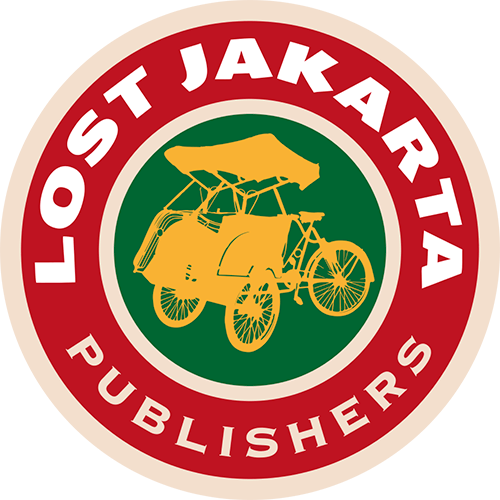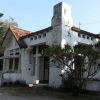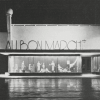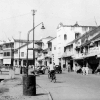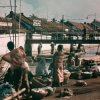
Most meetings of the Batavia/Jakarta City Council between 1908 and 1911 were dominated by debates and decisions to tackle the city’s severe housing shortage. A newspaper in January 1909 elaborated on the “housing misery” and explained that residential houses in Batavia for middle-income households were too expensive or of poor quality: “Often residents with a small or medium income have to search for houses beyond their buying power or are forced to live in the kampungs”. In 1908 the ‘Bataviaasche Bouwmaatschappij’ (Batavia Building Company) was established with the goal to build good quality and affordable houses.
De Bouwploeg
Nearly two years before this company merged into ‘N.V. De Bouwploeg’ and focused on the masterplan for New Gondangdia and Menteng, it started to experiment in Kramat. The company bought a sizeable piece of land that stretched out from Kramatlaan (now Jalan Kramat V) to Salembaplein (now Jalan Kramat VI) and Laan Wiechert (Jalan Kramat VII), all side streets of the main north south Kramat road. On this piece of land were the ruins of the former Kramat Hotel. Architect P.A.J. Moojen (1879-1955), who arrived in Indonesia in 1903 and was partner of the firm Biezeveld and Moojen in Bandung until 1910, had already designed the new dining rooms of Hotel des Indes and Hotel de Nederlanden (1906), the book store of Visser & Co (1907) and the new NILLMIJ head office (1909), all in Batavia/Jakarta. He was commissioned to design 120 new houses along the forementioned 3 streets in Kramat. Moojen used solid materials and most houses featured innovative designs and fittings (more in the next post).
Kramatpark
Despite the luxury appearance, especially those with two-storeys, they were still marketed as affordable. The monthly rental price varied between 75 and 125 guilders for a two-storey house. The Bataviaasche Bouwmaatschappij remained the owner of all houses. Only 22 houses had two-storeys. These were built at the end of Kramatlaan (which was called ‘Kramatpark’ in popular speech but never obtained that name officially) and the end of Laan Wiechert (Jalan Kramat VII), close to the Ciliwung River. A number of these two-storey houses do still exist today, of which four adjacent houses on Jalan Kramat VII (numbers 23, 25, 27 and 29) are the most eye-catching. These four houses are all visible on the historic picture from 1912, and in the same sequence on the four coloured photos of 2014 and 2015. We were kindly alerted by Scott Merrillees that a number of these houses do still exist today. All photos are individually posted in the comments below this post too.
sources: Scott Merrillees, Google, Lost Jakarta
